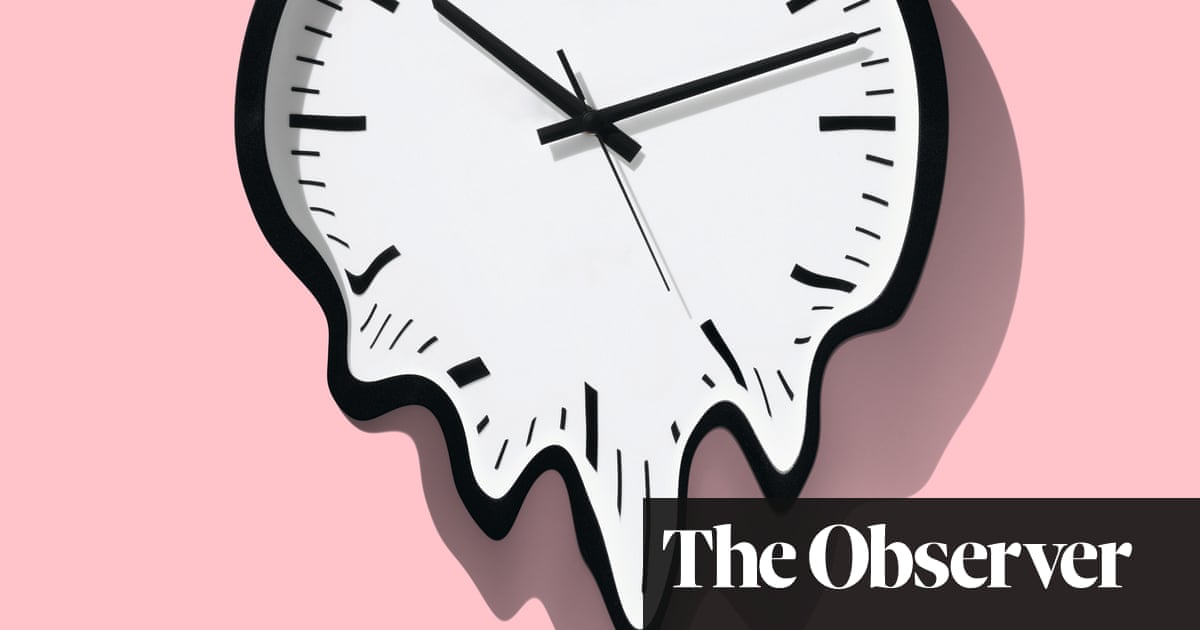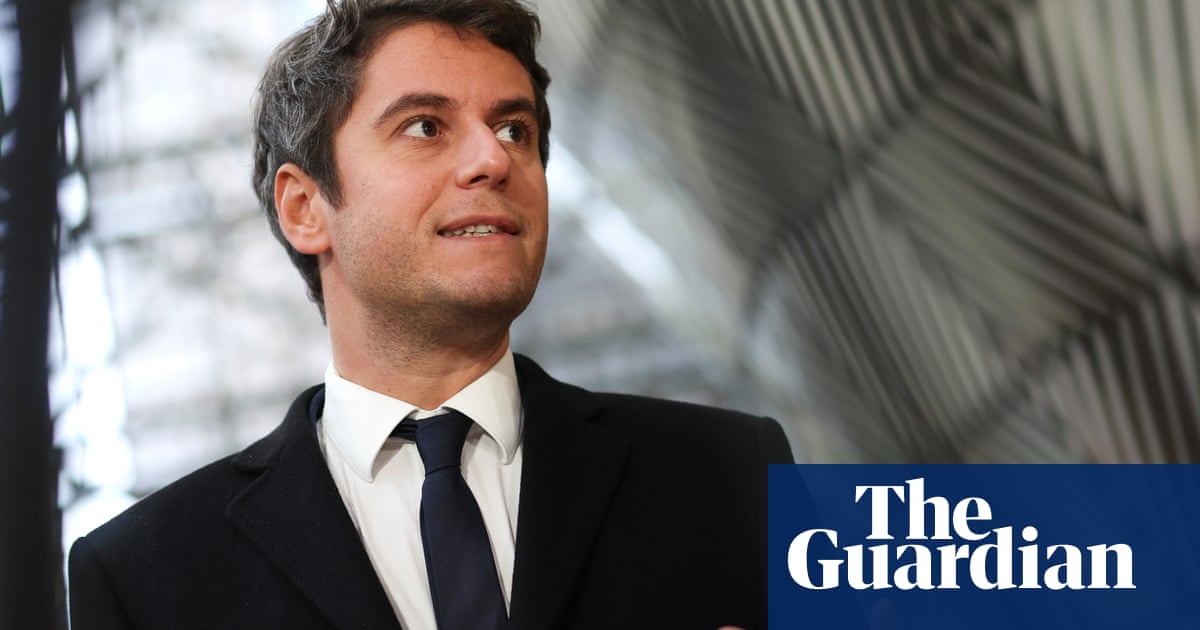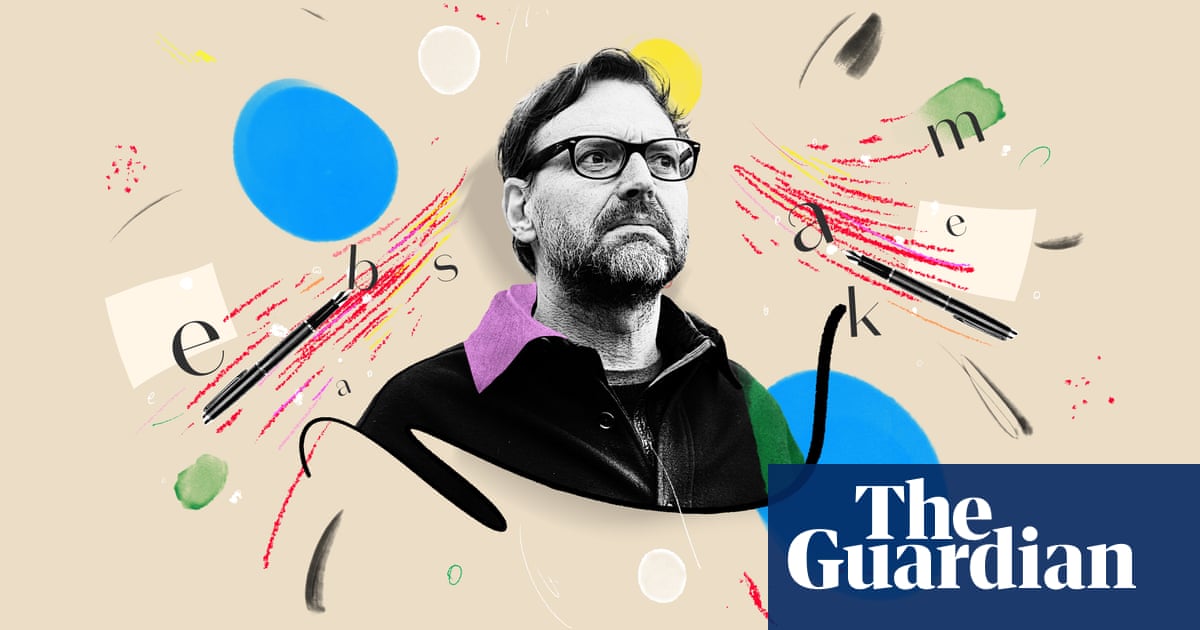
Jenny Odell, the artist and writer, appears on my screen. She’s 35 years old, with long dark hair, a fringe, and big glasses with dark frames. She’s in her kitchen in Oakland, California. She loves nature and for a while she taught art and design at Stanford. In her art she finds objects and images, often on the internet, and arranges them into beautiful shapes. She likes looking at random things and thinking deeply about them. Four years ago she published a book called How To Do Nothing, where she explains that the internet, by being such a useful servant to us, has managed to turn itself into our master; the result is that we no longer pay attention to what’s really important.
Get off all those apps, she says, and start looking at the real world, which actually does need our attention. Barack Obama said How To Do Nothing was one of his books of the year.
Now Odell has written a new book, Saving Time, in which she says that our woes are even deeper and more pernicious than she’d thought. We have a worse problem than the attention economy, she explains – our understanding of time itself.
It’s 10.30 on a sunny California morning for Odell and 5.30 on a dark British evening for me. This is “clock time”, the type of time, Odell believes, that has taken over our brains, as opposed to all the other sorts of time – sundial time, tidal time, time as represented by the circadian rhythms of trees, birds, insects, reptiles and mammals, including us. There are many more types of time, too: geological time, seasonal time and, of urgent concern, climate time. There are lifespans and health spans. There is time that seems to stand still. And then there is time that comes to an end, when you die. But it’s clock time our society is focused on, clock time that harms us, divides us, steals from us and makes us destroy the planet. Clock time is all about productivity, money and economic growth. But clock time is really a fantasy.
Given the circumstances, I can’t quite greet Odell with either “Good morning” or “Good evening”, because neither would exactly be true. In our conversation, it is both 10.30am and 5.30pm. Clock time is already messing with us. “Time,” I say, “must be just about the hardest thing to think about.” Odell is silent for a while. “Yes,” she says.
Looking back in time, she tells me she grew up in Cupertino, California, “in a neighbourhood that is now extremely unaffordable as it’s really close to Apple”. Her American father was an electrical engineer; her mother, from the Philippines, worked for Hewlett-Packard. Odell is an only child. Her mother noticed “that I was happier if I was outside. I liked to pay really close attention to the things that were in front of me. I feel like there’s a deep assumption in me that whatever is in front of you, there’s something interesting about it. I trust that there’s something there to see.”
Of her parents, she says: “I think it’s also significant that they left me alone a lot. They were not helicopter parents. So it allowed me to get really, really absorbed in what I was doing.” She was often “making little systems, and just not being interrupted. That’s still kind of my favourite feeling.”
Thirty-odd years later, Odell has moved a few miles away to Oakland, where she lives in a large apartment block with her boyfriend and where she still pays close, obsessive attention to the objects around her. Now she tries to make sense of them. “Something is true of all my work, whether it’s art or writing,” she says. “I feel like I’m always trying to do the same thing, which is: just move someone, because I think for someone to feel like they’ve been touched or moved is a way through that crust that everyone grows to just get through the day. Except in these moments when… something happens, or you experience a work of art, or have a conversation that pierces that crust.”
We’ll get to her art in a moment, but first I want to have a conversation about clock time which, Odell believes, drives us mad and makes us grow the crust, the armour, to get us through the day. Odell’s starting point is that clock time, which has nothing to do with sun, moon, tides or seasons, is infinitely fungible. Even though – in fact, because – it is not real, you can divide it into tiny pieces which, in our extreme market economy, can be bought and sold. But a hierarchy inevitably develops – some skills are more valuable in a given economy than others, meaning that one person’s time is worth more than another’s. To explain this to me, Odell cites the opening scene of Charlie Chaplin’s film Modern Times. The crucial part is “the extreme contrast between the very relaxed boss in his very quiet office taking his supplements, and then a hard cut to the factory floor” – where Chaplin, who can’t keep up with the factory’s machines, keeps bashing into people and is sucked into the bowels of the factory. Later, to increase his efficiency, Chaplin’s boss hooks him up to a force-feeding machine, which goes haywire and attacks Chaplin, bashing him in the face over and over with a corn cob. “I consider the corn cob malfunction one of the funniest movie moments I have ever seen,” writes Odell in Saving Time.
We discuss the speeded-up world we live in – instant coffee, microwaves, lifts that elevate 30 times faster than they did when they were first invented, banks that employ trading bots to buy and sell stocks in thousandths of a second. Time is money and we are all traders of our time, even when we get AI machines to do it for us. But in a world of fast cars, fast food, fast lifts and apps on our phones that can tell us the quickest route from A to B, we feel more rushed than ever. Odell, who taught art and design at Stanford, says: “One thing that used to happen a lot was that I would be rushing to my class and I’d have all my bags and papers and stuff, and I’d be very stressed out about what I was going to do in class, and then I would be arrested, I would stop because I could see some bird, the Stanford campus has a lot of birds, and migratory birds, and I used to say, when I would describe those moments, that time stopped. To me, that is a moment of love – I am completely taken over by love and curiosity. But I thought about it later, and it was like, you know, it’s not that time stopped – it’s just that one timeline stopped. The timeline of me rushing to class, and thinking that I should have prepared more. That stopped. But, especially in the case of a migratory bird, I was actually seeing a different kind of time. That bird is only there part of the year – and when you see it, you have to think about where it’s been and where it’s going, which could be incredibly far away. One signal gets weaker and then the other one gets stronger.”
When Odell was a child, she tells me, her mother read her a story about a boy and a ball of thread. “It was from a book that my mom got from a garage sale, which she still has. A witch visits this young boy, who is impatient by nature, and gives him a ball of thread. She tells him that if he pulls the thread, time will go faster and she warns him not to pull it too much, because it only goes in one direction. Like time.”
Of course, the boy keeps pulling the thread – he always wants to get to the next stage of his life. “He pulls it when he wants to go home from school, but then he also pulls it because he wants to marry his sweetheart. So he’s pulling it and pulling it – and then he’s an old man.” Then, lesson learned, the witch gives him another chance. “The moral for me,” says Odell, “as a children’s story, is that you only get one life. For me, it ended up more as a story about the fact that time only goes forward. As a child, time stretches out forever in front of you. I think I was deeply terrified by that story.”
Odell finds it helpful to use two ancient Greek words, chronos, which signifies the time that marches forward relentlessly, and kairos, which can mean “transcendental moment”. However long or short your life is, numbered in years, might matter less than the number of transcendental moments you get to experience. Like when you see an amazing bird and everything else falls away – the bundle of papers you’re holding, the fact that you’re in a rush, the class you’re about to take. Or like falling in love? “Yes,” says Odell. “I’ve always been interested in ego-effacing things. Something that makes your boundary a little bit blurry. Some people would describe that feeling as love. Like when you see something that’s so beautiful that you almost think that you’re outside yourself. Or when you feel so strongly towards someone, or you feel so much empathy that you feel you don’t quite exist, like, separately from them. These are all things that soften the boundary around the individual. Which is why it so often seems to not make sense.”
Falling in love is not about productivity, says Odell. It’s not about personal gain: “There’s something about falling in love that doesn’t make any sense.”
When you fall in love, you are out of time. You are beyond the realm of chronos, and into the realm of kairos. How else can you achieve this state? You can commune with nature. Or you can be moved by art. Odell says this happened to her at a John Cage concert. “Not only did it change how I heard sounds within the performance itself, I walked outside and I felt like I had a hearing aid, like I could hear everything in the city, almost as if for the first time. I’d lived there for years at that point. And I don’t think I’ve ever heard anything the same way again. I feel my hearing has permanently changed.”
A transcendental moment. Kairos. As an artist, Odell seeks these moments. In one of her projects, she collected hundreds of pictures of objects from Google Earth – for instance, swimming pools and sewage plants – and arranged them in circles, to be painted on the wall of a vast Google data centre in Oklahoma. Sort of like Damien Hirst on a vast scale. In another work she created a self-portrait made out of photographs of trash called Garbage Selfie. In 2015, she was artist in residence at the San Francisco dump. She spent a year sifting through garbage. “I was given lots of time and space, uninterrupted, just to go into this pile of trash and pull things out, and spend basically as long as I wanted to, trying to explain the existence of these objects, what they were made out of. It mattered to me that it was trash. I wasn’t picking things out of the garbage that were beautiful or vintage.” A deep connection with objects lost to time. “It was one of the happiest times of my life,” she says.












